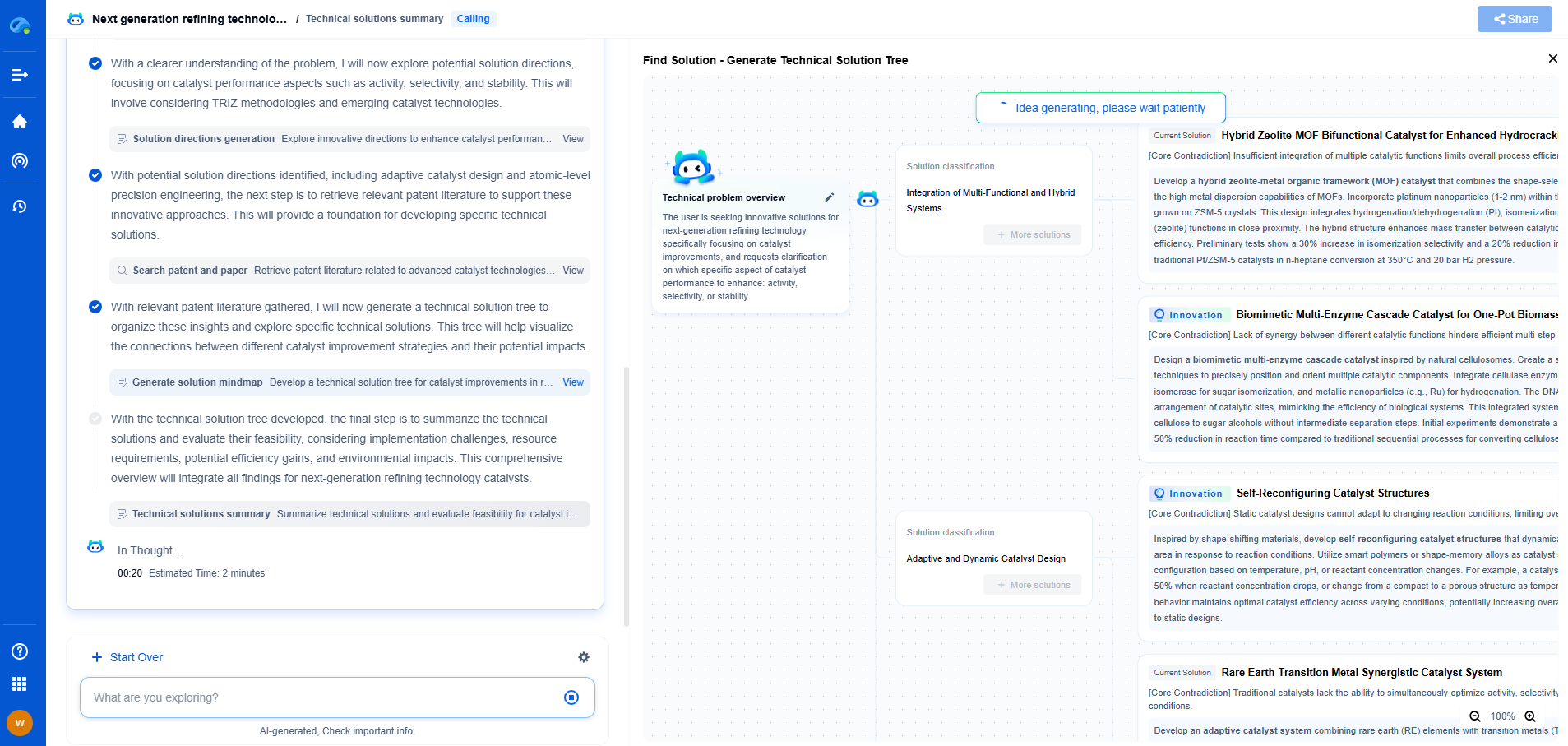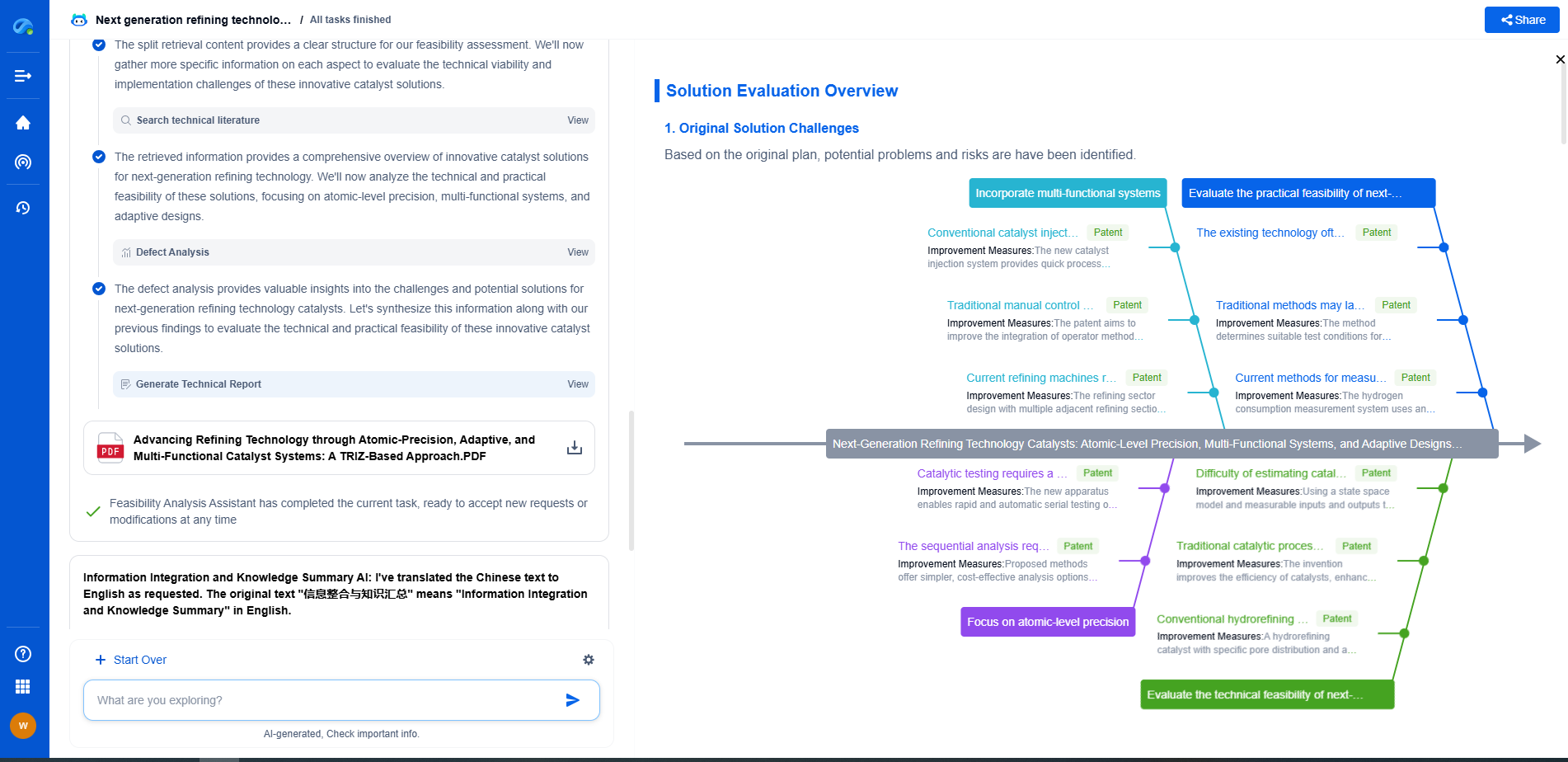Spectrum Analyzer Overload Warnings: Preventing ADC Saturation in High-Amplitude Tests
JUL 16, 2025 |
Spectrum analyzers are essential tools in RF testing and signal analysis. They allow engineers and technicians to visualize the frequency spectrum of electrical signals. However, one of the challenges in using spectrum analyzers is dealing with overload warnings, which indicate that the input signal amplitude is too high for the device to handle accurately. Understanding these warnings is crucial to prevent incorrect readings and ensure the reliability of test results.
The Role of ADCs in Spectrum Analyzers
At the core of a spectrum analyzer's functionality is the Analog-to-Digital Converter (ADC). The ADC is responsible for converting the analog input signal into a digital form for further analysis. It is a critical component because its performance directly affects the accuracy, resolution, and dynamic range of the measurements. When a signal's amplitude exceeds the ADC's input range, saturation occurs, leading to clipping and distortion of the signal. This distortion can result in erroneous data, making it vital to manage signal levels effectively.
Recognizing Overload Conditions
Overload conditions occur when the input signal power exceeds the maximum allowable input level of the spectrum analyzer. This can be caused by high-amplitude signals that exceed the dynamic range of the ADC. The spectrum analyzer will typically issue an overload warning in such cases, alerting the user to the potential for inaccurate measurements. Recognizing these warnings and understanding their implications is essential for maintaining the integrity of the analysis.
Preventing ADC Saturation
1. **Attenuation:** One of the simplest ways to prevent ADC saturation is by using an attenuator. Attenuators reduce the signal's amplitude before it reaches the ADC, thereby preventing overload. It is important to select the right level of attenuation to ensure the signal remains within the ADC's linear range without introducing too much noise.
2. **Pre-amplifiers:** In some cases, using a pre-amplifier is beneficial, especially when dealing with weak signals. However, care must be taken to avoid boosting the signal to a level that causes overload. The goal is to optimize the signal-to-noise ratio without exceeding the ADC's limits.
3. **Input Range Adjustment:** Spectrum analyzers often allow users to adjust the input range settings. By configuring these settings correctly, users can ensure that the analyzer operates within its optimal range for the expected signal levels. Regularly reviewing and adjusting these settings based on the test environment can prevent overload issues.
4. **Filtering:** Employing filters to eliminate unwanted signal components can help manage signal levels. By isolating the desired frequency components, filters can prevent excessive signal power from reaching the ADC, thus reducing the risk of saturation.
Importance of Regular Calibration and Maintenance
Regular calibration of spectrum analyzers is critical for accurate measurements. Over time, the performance of an analyzer can drift due to environmental factors and component aging. Calibration ensures that the device's specifications are maintained and that any potential issues, such as changes in the ADC's input range, are identified and corrected. Routine maintenance, including checking connectors and cables for wear and tear, can also prevent unintentional overload situations caused by hardware malfunctions.
Conclusion: Ensuring Accurate Measurements
Managing spectrum analyzer overload warnings and preventing ADC saturation are essential practices in high-amplitude RF testing. By incorporating attenuation, adjusting input settings, using pre-amplifiers judiciously, and applying filtering techniques, engineers can minimize the risk of inaccurate readings. Regular calibration and maintenance further contribute to reliable test results. By understanding and addressing these aspects, users can maximize the performance and accuracy of their spectrum analyzers, ensuring the integrity of their signal analysis tasks.
In the world of vibration damping, structural health monitoring, and acoustic noise suppression, staying ahead requires more than intuition—it demands constant awareness of material innovations, sensor architectures, and IP trends across mechanical, automotive, aerospace, and building acoustics.
Patsnap Eureka, our intelligent AI assistant built for R&D professionals in high-tech sectors, empowers you with real-time expert-level analysis, technology roadmap exploration, and strategic mapping of core patents—all within a seamless, user-friendly interface.
⚙️ Bring Eureka into your vibration intelligence workflow—and reduce guesswork in your R&D pipeline. Start your free experience today.
- R&D
- Intellectual Property
- Life Sciences
- Materials
- Tech Scout
- Unparalleled Data Quality
- Higher Quality Content
- 60% Fewer Hallucinations
Browse by: Latest US Patents, China's latest patents, Technical Efficacy Thesaurus, Application Domain, Technology Topic, Popular Technical Reports.
© 2025 PatSnap. All rights reserved.Legal|Privacy policy|Modern Slavery Act Transparency Statement|Sitemap|About US| Contact US: help@patsnap.com

